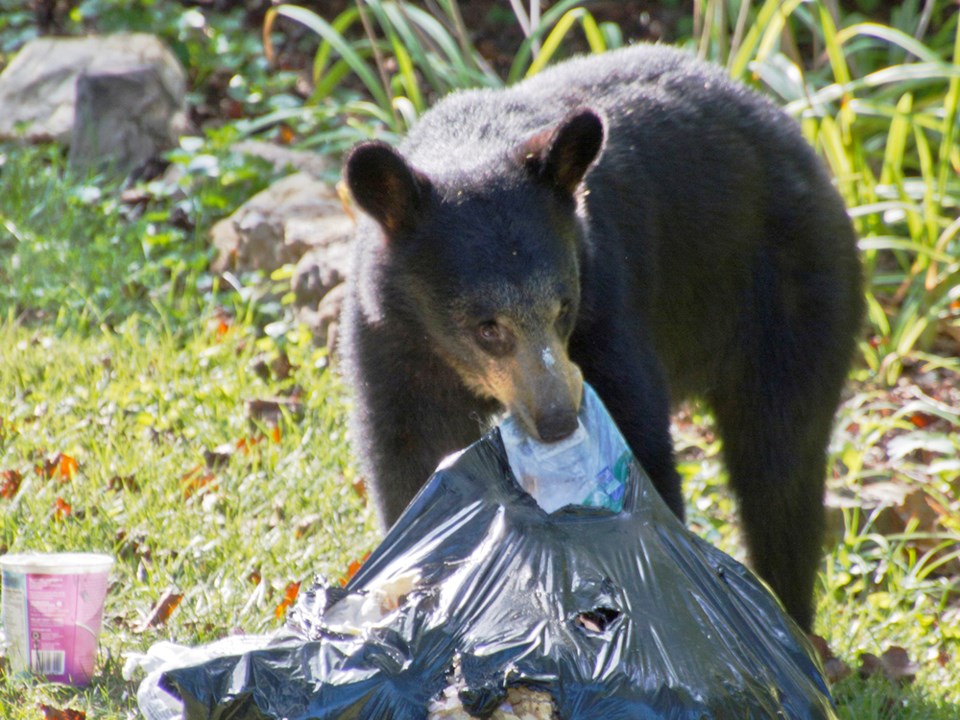You know the feeling when you’ve just awoken from a nap? You’re wandering around in a bit of a fog and if you’re a bear, in search of a meal. Understanding the needs and habits of the majestic creatures we share a home with is key to keeping bears wild and humans safe.
Springtime is when all of the natural world is coming to life. Birds greet us in the morning sun, frogs croak by ponds and bears emerge from dens.
Surprisingly, bears rarely sleep through the entire winter in the milder, southwestern coastal region, coming out to snack and lazily moving about before returning to sleep. As they get ready to mate in June, however, black bears are keen to bulk up on whatever is readily available and sleeping is one of the last things on their mind.
In their natural state, bears will forage on protein-rich greens in the spring, such as skunk cabbage, grasses, willow catkins, dandelions and clover. When an easier and calorie-rich meal presents itself, however, they welcome the offering.
A full bird feeder can contain as much as 8,000 calories, making it a temptation worth crashing through a front yard for. Unmanaged compost piles and kitchen scraps thrown into the bush are also sure to attract furry critters of all sizes.
Dirty barbecues, food-contaminated garbage and even odourous recycling, grey water, body-care products and pet food can draw unwanted attention from foragers. If you have backyard chickens or beehives, using a simple electric fence is recommended.
Lest you be dismayed, composting in bear country is possible but it does involve extra considerations, especially if you have had a bear friend in your pile in the past.
A healthy compost will not smell appealing to a bear. To ensure food scraps break down efficiently, they need to be balanced out by about the same volume of carbon-rich materials: untreated wood shavings, wood chips, shredded newspaper, straw or brown leaves. This combination will create the right chemistry to heat up your pile and get microorganisms kick-started to do their job.
If you’re not squeamish, adding urine to your compost, especially if you are also adding highly attractant food scraps such as fish or fat, will help deter a bear’s interest. That said, keeping these attractants out of your compost altogether is the best plan.
Many communities, including Powell River, have compost drop off sites residents can use for items they’d prefer to keep out of their backyard, as well as the landfill. Town Centre Recycling Depot (next to Rona) and Sunshine Disposal & Recycling are two locations where these items can be dropped off for free.
With more than 140,000 black bears and 15,000 grizzlies in BC, it’s incredible to note that deadly encounters between humans and bears are extremely rare. Three people are killed in North America per year by bears.
Bears, however, are not nearly so fortunate. More than 500 bears were killed by conservation officers in BC alone in 2021. It is clear that bears ought to be a lot more afraid of us than we are of them. Once a bear is habituated to human sources of food, it can be a challenge to manage its appetite for it, and this often results in relocating or killing the bear.
What humanity should offer bears is respect. When we attract bears into our surroundings, we put them in danger.
Learn more about bears and other large mammals in BC on the WildSafeBC website.
Let’s Talk Trash is qathet Regional District’s waste reduction education program. For more information, email [email protected] or go to LetsTalkTrash.ca.




